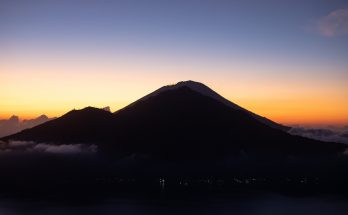
Welcome to Bali Goa Gajah Temple or Elephant Cave Temple which is located in west side of countryside, Blah Batuh Sub district and Gianyar Regency. It is about 27 km from Denpasar town. This cave is built at crevasse edge from the federation of 2 rills that is called Pangkung River , where the irrigation is mixed with Petanu River flow. The federation area of two rivers is called Campuhan/Mixture. It owns the magical energy on the basis of Rwabineda Concept/two different matters on this basic concept hence Goa Gajah Temple or Elephant Cave Temple is intentionally built among two rivers. GOA GAJAH TEMPLE | BALI INTEREST PLACE
The word of Goa Gajah is anticipated coming from the word of Lwa Gajah, the name of Buddhist Temple or hermitage for Buddhist monk. The Goa Gajah’s name is written on Negara Kertagama papyrus which is compiled by Mpu Prapanca on 1365 M. Lwa or Lwah/Loh mean the river and it reflect to the meaning that the hermitage is located at Gajah River or in Air Gajah. In the year inscription 944 Saka, it is mentioned with the name of ‘ser ring Air Gajah’ that is meaning the Subak leader in Air Gajah. The word has mentioned that the hermitage of Lwa Gajah is located in Subak Air Gajah. Among the local residents, the Goa Gajah Temple is better known as Cave Temple, located in the west of Bedahulu Village, Blahbatuh Subdistrict, Gianyar Regency. It is about 27 km east of Denpasar. Indeed this temple was built at the valley of Petanu River having beautiful natural panorama. Goa Gajah Temple Geographically
In the northern part of the temple, lies a carved Cave of Nature in the shape of the letter ”T”. Inside this cave there is a Ganesha statue considered as the god of sciences. Additionally, at the location can also be encountered some fragments of statues and a Trilangga surrounded by eight small phallus.
In the cave wall, there are niches of the hermitage and the face of Cave is decorated with carvings depicting a jungle with its contents. Similarly, there is a short inscription which reads ”Kumon” and ”Sahywangsa”, which according to the type of letters it is alleged to originate in the eleventh century AD .
Location : Bedulu Village, Blahbatuh District, Gianyar Regency





